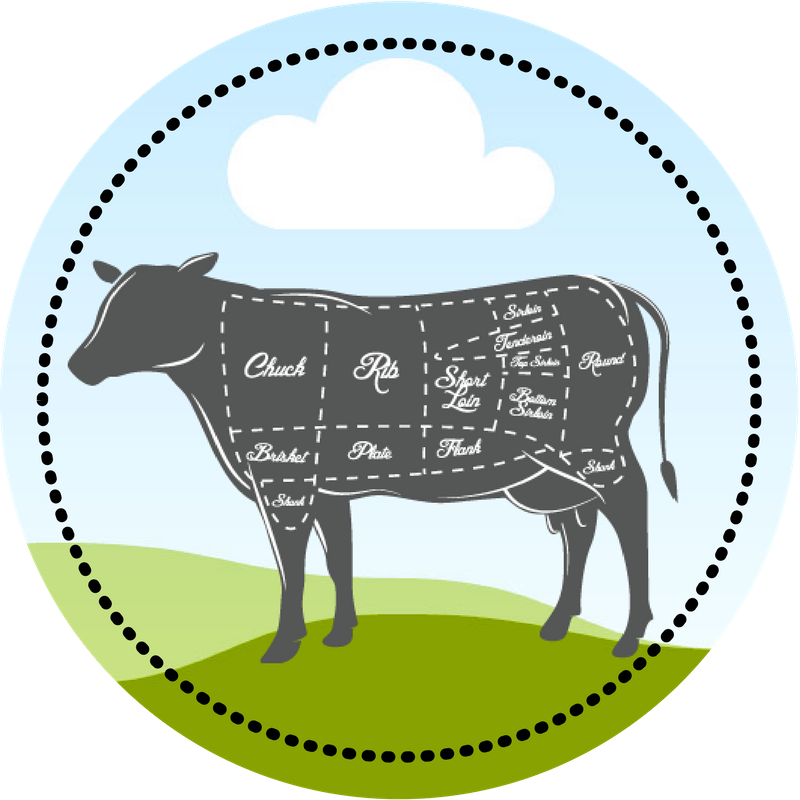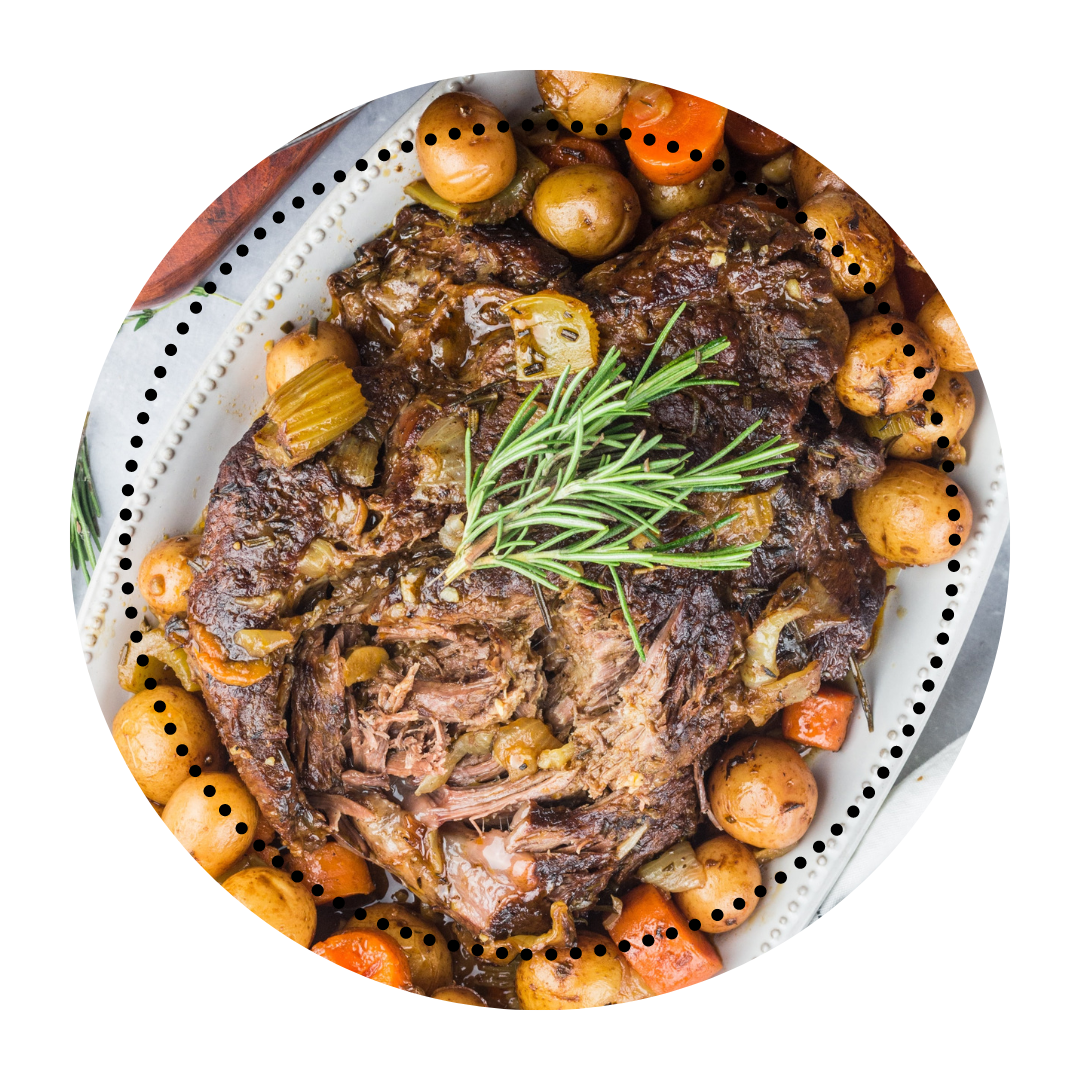Sign up for Heritage Belle Farms’ newsletter and get our, '6 Tips for Cooking Tender Grassfed Meat' for FREE + product availability, recipes and stories from the farm
American Grassfed Association Certified Grassfed Beef
American Grassfed Aassociation defines grassfed animals as those that have eaten nothing but grass and forage from weaning to harvest, which by definition also means grass and forage finishing. That means no grain, EVER! Also, under AGA's standards, grassfed animals have not been raised in confinement, and have never been fed antibiotics or growth hormones. If a grassfed animal is sick or injured and absolutely needs antibiotic intervention, that animal is marked with an ear tag and taken out of our grassfed program. In addition, all AGA-Certified Producers are American family farms and their livestock is born and raised in the U.S.
Grassfed meat is:
* Healthy for people. Research shows that grassfed meat is lean, especially Texas Longhorn meat, contains a high percentage of good fats – Omega 3s and CLA — and beneficial antioxidant vitamins and minerals.
* Healthy for animals. Cattle, goats, sheep, and bison evolved to eat grass and not much else. Feeding them a diet rich in grains creates an acidic environment in their digestive systems, leading to disease and the need for treatment with antibiotics.
* Healthy for the planet. Pasture-based farming restores natural ecosystems and wildlife habitat, reduces reliance on petrochemicals, improves the soil with organic matter, and reduces greenhouse gasses, especially CO2.
* Healthy for communities. Small family farms provide jobs and strong economies in rural communities and create sustainable businesses for succeeding generations.
A little bit about the breed…
“The iconic breed of cattle known as Texas Longhorn evolved from select Iberian cattle that early Spanish explorers introduced to the New World from Spain and Portugal in the late 15th and early 16th centuries. The cattle were brought initially to the Caribbean islands from where they were introduced into Mexico. Over the next two centuries, cattle numbers and ranching increased moving north into present day Texas and across the southwestern U.S., while others moved south into Columbia and Venezuela. The cattle were used as a source of food, leather, tallow, and oxen labor, playing a key role in early European settlements in the “New World.” As Spanish missions were settled and later abandoned due to conflicts, raids and diseases that killed indigenous peoples as well, the cattle roamed freely, unencumbered by man in the wild open spaces, eventually becoming America’s original cattle breed.
In the 1800s Anglo-European settlers arrived in Texas. They gathered the feral cattle for beef, rawhide and oxen labor while introducing other fattier Indian and European cattle, which they preferred for tallow production. Texas Longhorns fell out of favor in the beef industry because their horns did not fit well into rail cars and later into feedlots. By the end of the 19th century, following extensive cross-breeding and numbers reduction due to cattle drives, longhorn populations were seriously endangered.
Texas Longhorn cattle range in weight from 800 to 1200 pounds depending on the land on which they are raised. The Texas Longhorn is one of the most majestic and ecological cattle breeds today, known for their characteristic lateral, twisty horns that developed as a defense from predators. They are recognized for their healthful beef characteristics; their ability to thrive in harsh, marginal environments with little maintenance from humans; and the economic advantage to raising them due to their naturally evolved heartiness including disease resistance and fertility. Beef from the Texas Longhorn has a robust flavor, that echoes their wild heritage, with somewhat of a sweet taste.
Despite efforts to conserve Texas Longhorns, as of 2015 their numbers are still seriously at risk due to continued crossbreeding, herd reductions, retiring ranchers, and lack of public awareness of Heritage Texas Longhorn as a healthy edible beef choice. The Livestock Conservancy has classified historically correct, heritage Texas Longhorn Cattle (CTLR) as “Critically Endangered” — facing near extinction. According to a 2013 census by the Livestock Conservancy, conducted by CTLR, the global population of these purebred heritage longhorns may be just over 3,000 animals, with approximately 1,200 longhorns in the U.S.” - https://www.slowfoodusa.org/ark-item/heritage-texas-longhorn
shop for beef
Next harvest date is April 28, 2023. —> SOLD OUT Please email us at heritagebellefarms@gmail.com if you are interested in purchasing bulk beef in 2023.
How to get our Grassfed Beef
For bulk shares, including 1/2 & whole, we will contact you often with details regarding your purchase, including date of butcher, cut sheets (if applicable), and when you can expect your beef to be available for pickup.
If individual beef cuts are available, there will be a purchasing option above ↑. Those items will also be available for farm pickup or an arranged “meat-up,” sorry, no shipping is available.
Meat-Up
Please see our event calendar for a listing of our FREE “meat-up” locations, dates and times.
Romar Freezer Storage
721 Nichols Blvd, Colorado Springs, CO 80907
Buckley’s homestead supply
701 W Colorado Avenue, Colorado Springs, CO 80905
Ranch Foods Direct Warehouse
4635 Town Center Drive, Colorado Springs, CO 80916
farm pick up
Place your order and we’ll follow up with you to schedule a time to visit the farm and pick up your order.
22755 E Garrett Road Calhan, CO 80808
*Please don’t bring your dog(s) to the farm. We have working livestock guardian dogs that are not friendly with other dogs.
Sorry, no Delivery/Shipping
Our farm is 20 miles from the eastern most part of Colorado Springs. It takes an incredible amount of time and resources for us to offer delivery, which is time taken away from our farm and family. For that reason, we no longer offer farm-to-door deliveries.
We also do not offer shipping of our frozen meat. We know you love our beef, but we believe shipping meat is counter-productive to supporting locally produced food.
We invite you to invest you time in supporting local food production by utilizing our free “meat-ups” or picking up your order from the farm.
Sign up for Heritage Belle Farms’ newsletter and get our, '6 Tips for Cooking Tender Grassfed Meat' for FREE + product availability, recipes and stories from the farm












































